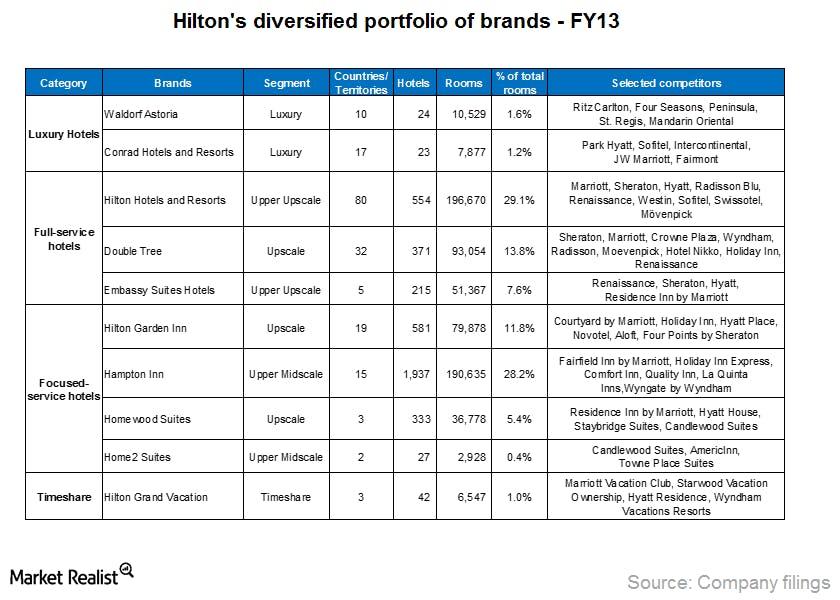Starwood Hotels & Resorts Worldwide Inc
Latest Starwood Hotels & Resorts Worldwide Inc News and Updates
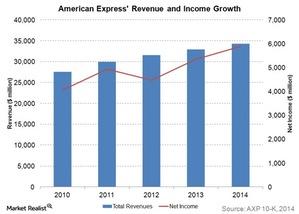
American Express: Opportunities Abound in a Challenging Market
Co-branding relationships are an important part of the American Express business model. The costs of renewing and extending these relationships is increasing.
Understanding Marriott International’s Valuation Multiple
In fiscal 2014, Marriott had forward EV-to-EBITDA multiple of 15.3. It was trading at 11.2 as of January 1, 2016, which was the highest among peers.
Big Hotels on the Block: Sizing up Wyndham Worldwide’s Competitors
Since 2010, Wyndham’s stock has outperformed all its peers, growing by over 270%. In that time, Marriot grew by ~176%, Starwood by 102%, and Hyatt by 67%.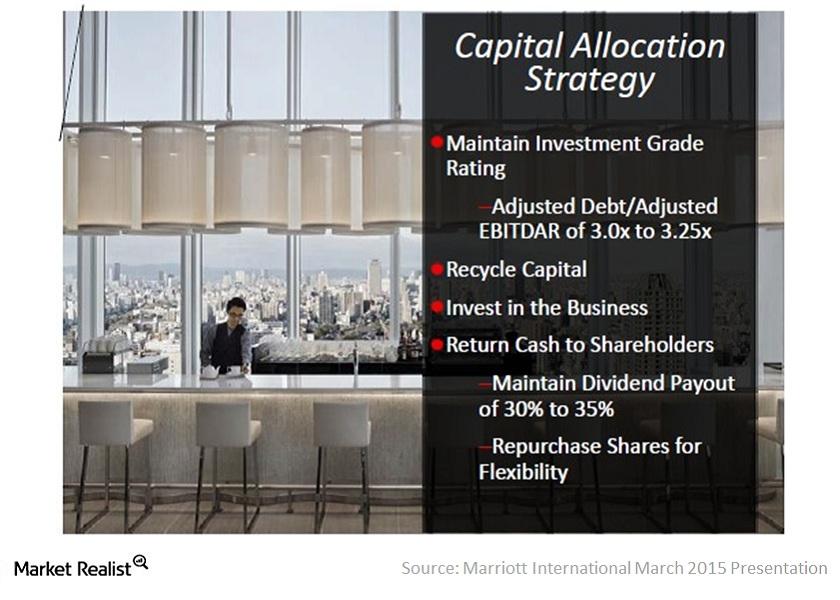
Why Marriott is Buying Back Its Own Shares
Marriott repurchased 7.7 million shares of common stock valued at $544 million in 4Q14 and 24 million shares for $1.5 billion in 2014.Consumer Why Marriott is slowly expanding in international markets
Marriott has been expanding its presence in the international market. It added new brands in Europe, Asia Pacific, and the Middle East and African regions.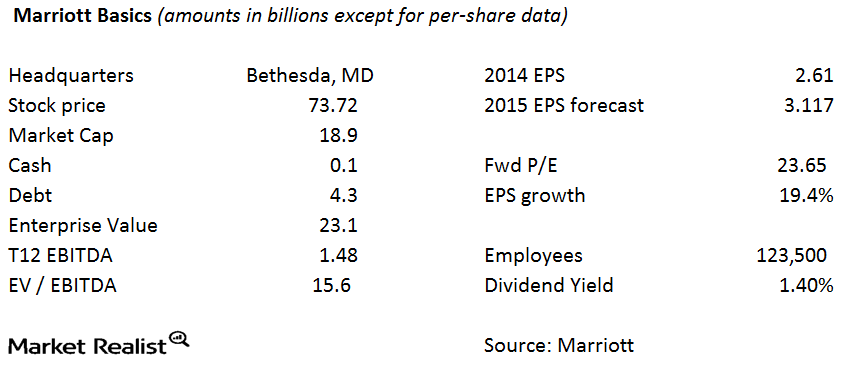
Rationale for the Starwood-Marriott Merger
With the Starwood-Marriott merger, the companies expect to generate at least $200 million in annual cost savings beginning in the second year after the deal closes.Hilton’s hotel room composition by brand and chain scale
Hotel companies, like Hilton, expand their operations based on the demand for accommodations by location. They also expand based on customer preference for the level of service offerings.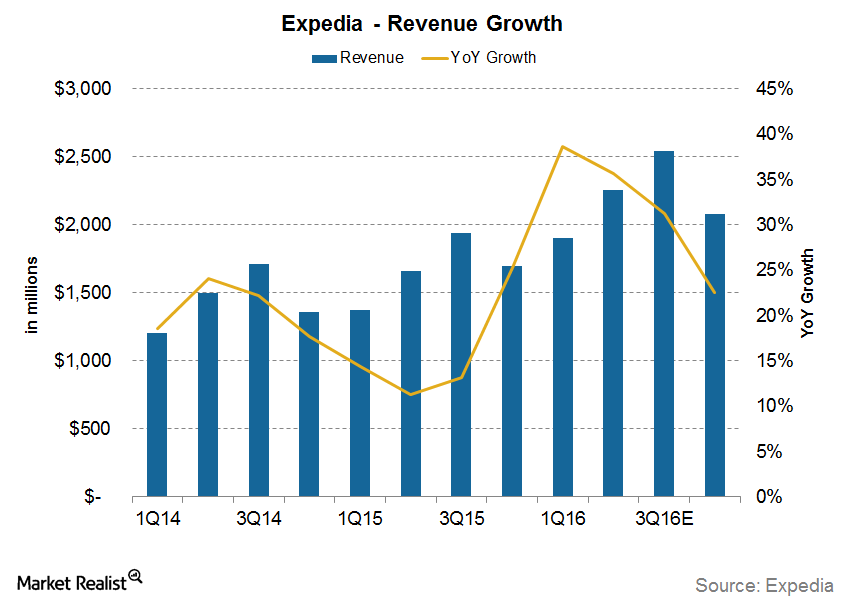
Can Expedia Continue Its Revenue Growth in 2016?
For 3Q16, analysts are estimating Expedia’s (EXPE) revenue to rise 31.3%. That’s slightly lower than the growth in the first and second quarters.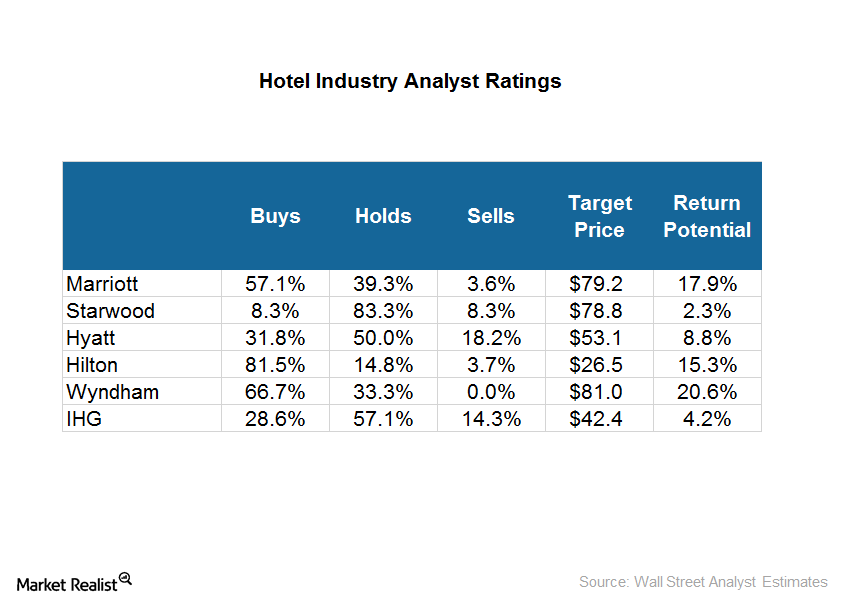
What Are Analysts’ Recommendations for Hotel Stocks?
Wyndham has the highest return potential of 21% with a target price of $81. Marriott is next with a return potential of 18% and a target price of $79.15.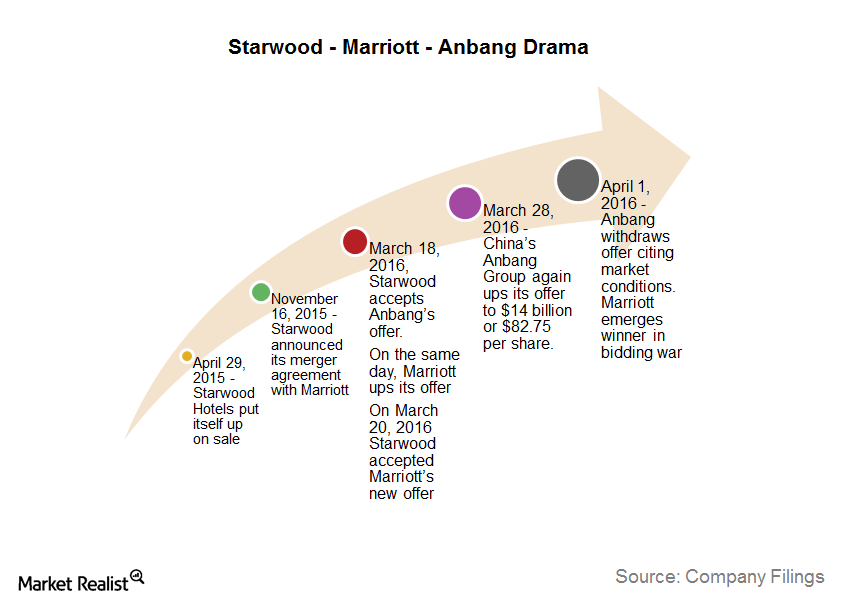
Analyzing the Key Events before the Marriott-Starwood Merger
On April 29, 2015, Starwood put itself up for sale. On August 29, 2015, Anbang offered to buy it at a 20% all-cash premium deal on its last closing price.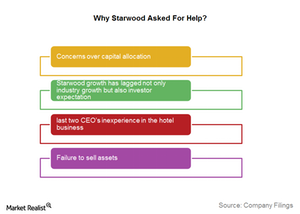
Why Did Starwood Sell Itself?
The last two years have been marked by turmoil for Starwood Hotels (HOT). Starwood’s properties include brands like the Sheraton, Westin, St. Regis, and W hotels.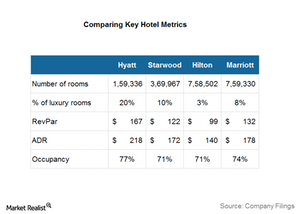
Marriott–Starwood Merger Synergies: The World’s Largest Hotel Chain
The Marriott–Starwood deal holds immense significance for Marriott International because the combined entity of Marriott International and Starwood Hotels and Resorts Worldwide would create the world’s largest lodging company.
The Starwood Sale: The Story to Date
In this series, we will discuss why Starwood (HOT) decided to put itself up for sale, how a merger with Starwood would benefit either Marriott or Anbang, and who could probably win this takeover tussle.
Understanding the Hotel Industry Valuation Multiple
The forward EV-to-EBITDA multiple for the hotel industry currently stands at 9. It has declined from 13.1, which was recorded at the beginning of 2015.
What You Ought to Know about Marriott International’s Asset Utilization
Marriott has one of the lowest asset bases among its industry peers, having reduced its PPE-to-total-assets ratio from 24% in 2012 to 21.2% in 2014.
Marriott International’s Expansion in the Franchise Model Is Bearing Fruit
Marriott’s operating margin increased from 5.9% in 2010 to 8.4% in 2014. Its operating income grew from $695 million in 2010 to $1,159 million in 2014.
How Could Falling Consumer Confidence Affect the Hotel Industry?
The Conference Board Consumer Confidence Index as of November 2015 was 90.4 compared to 102.6 in September 2015.
An Investor’s Introduction to the US Hotel Industry
Hotel investors can use the indicators discussed in this series to gauge the industry’s general trends. Leisure travelers make up ~60% of the total hotel room sales, and business travelers account for 40% of total sales.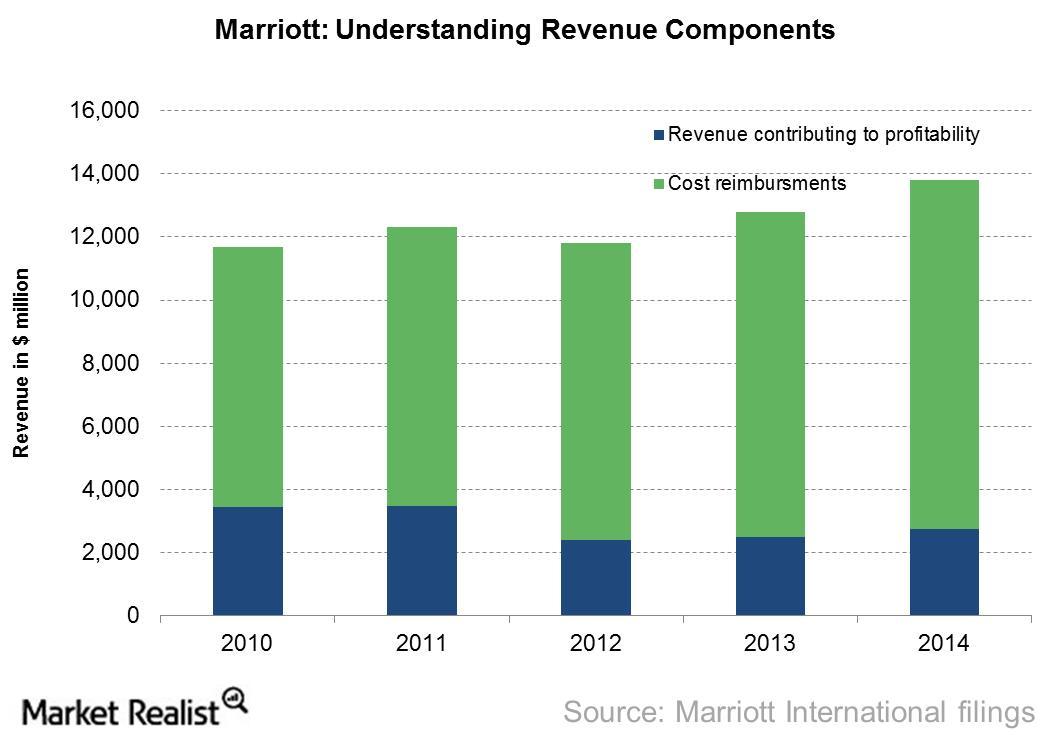
Understanding Cost Reimbursements as a Key Part of Marriott International’s Revenues
Cost reimbursements make up a major component of Marriott’s revenues and mostly consist of salaries paid to employees working in Marriott-managed hotels.
Why Marriott Relies Heavily on Its Franchise Model for Growth
Marriott now focuses on capital-light segments like franchised properties. Its fee incomes rose from $1.2 billion to $1.7 billion between 2006–2014.
Industry-Wide Demand Growth Drives Marriott International’s RevPAR
Marriott International saw strong increases in RevPAR—from $87 to $110—between 2010 and 2014.
Just How Much Does Marriott International Stand to Benefit from the Starwood Acquisition?
Marriott’s acquisition of Starwood will likely help Marriott double its international portfolio while diversifying its global presence.
Acquisitions and Joint Ventures Drive Marriott’s International Expansions
Marriott has been able to expand its international business by both acquiring and creating brands that enable it to enter new markets and market segments.
Marriott International in the Eyes of Customers: Outside Looking In
In 2015, Marriott topped the ACSI survey with a score of 80. It also topped the survey in 2014 and 2013, with scores of 83 and 81, respectively.
Marriott International’s Business Model by Service Category: Key Investor Takeaways
At the end of 2014, Marriott had around 2,882 franchised hotel properties, with 388,670 rooms under the franchise model.
Introducing Marriott International: Your Key Company Overview
Marriott International is known for its wide range of budget and luxury hotels. Its acquisition of Starwood will make it the world’s largest hotel chain.
Investor Essentials: Understanding Hyatt’s Valuation Multiple
Hyatt’s EV/EBITDA has moved in line with the median valuation multiple of its peers. Hyatt, with rare exceptions, has always traded at a discount to the median valuation multiple of its peers.
Why Hyatt Has High Liquid Assets Compared to Its Peers
As of December 31, 2014, Hyatt’s cash, cash equivalents, and marketable securities as a percentage of total assets is one of the highest among its peers, at 10%.
Asset Utilization by Hyatt Hotels
Hyatt had the lowest return on assets (or ROA) ratio among its peers at 4.6% for fiscal 2014 due to lower profits generated from its assets.
Profitability Margins Grew for Hyatt Hotels
Operating margins for Hyatt Hotel (H) increased from 1.4% in 2010 to 6.3% in 2014. The growth in margins was largely driven by steady growth in revenue and declining expenses from the owned and leased hotels segment.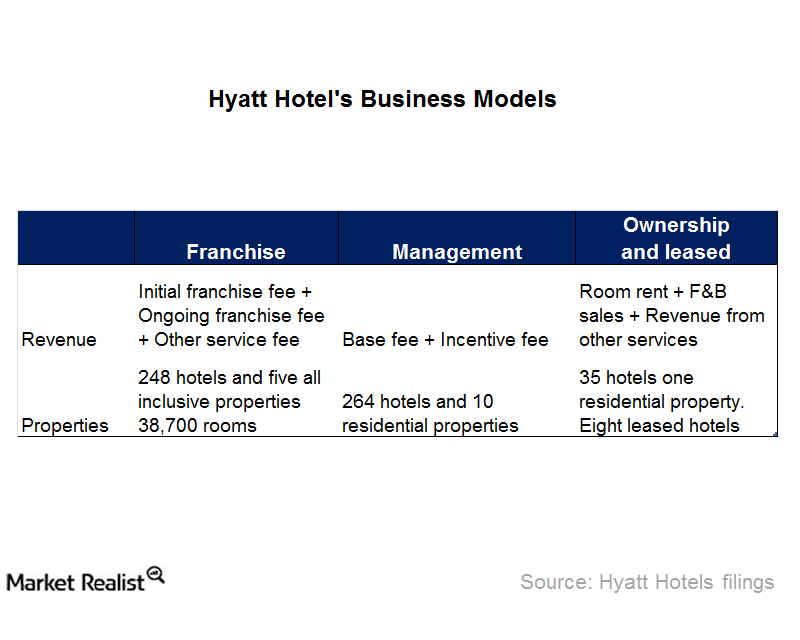
How Does Hyatt Make Money from Its Hotels?
Hyatt (H) operates its hotels and other business segments under three models: franchise, management, and ownership models.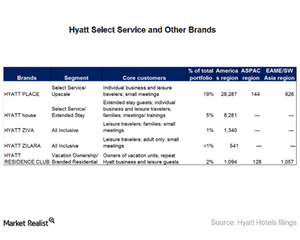
Introduction to Hyatt’s Select Service Brands and Other Brands
Hotels that offer accommodation with limited services and amenities are called select service hotels. Hyatt (H) operates about 37,500 rooms and two brands under this segment.
The Investor’s Introduction to Hyatt Hotels
A global hospitality group, Hyatt (H) operates industry-leading brands such as Park Hyatt, Andaz, Hyatt, Grand Hyatt, and Hyatt Regency. As of December 31, 2014, the company operated 587 properties with more than 155,000 rooms.
What’s Driving the Revenues of Wyndham Worldwide’s Vacation Ownership Segment?
Vacation unit sales rely on disposable income available to customers. The stable US economy and growing household incomes have positive impacts on Wyndham.
How Wyndham Uses Technology to Offer Greater Value to Its Clients
Wyndham invests in technology to improve its e-commerce capabilities and marketing abilities and to help it differentiate itself from competitors.
A Rundown of Wyndham Worldwide’s Wyndham Hotel Group Segment
Wyndham Hotel Group provides services under a franchise model but also offers professional oversight and operations support under a management model.
Introducing Wyndham Worldwide, a Hotel Super Power
Wyndham Worldwide is considered the world’s largest hotel franchiser. It owns the world’s largest vacation ownership and exchange network.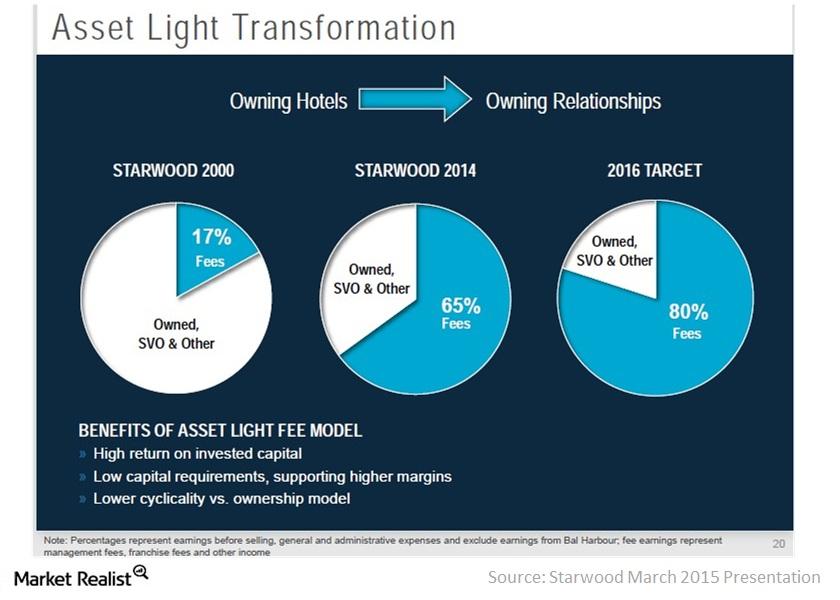
Analyzing Starwood’s Asset-Light Strategy
In 2006, Starwood’s management embarked on an asset-light strategy. It decided to sell a significant portion of Starwood’s owned hotel portfolio.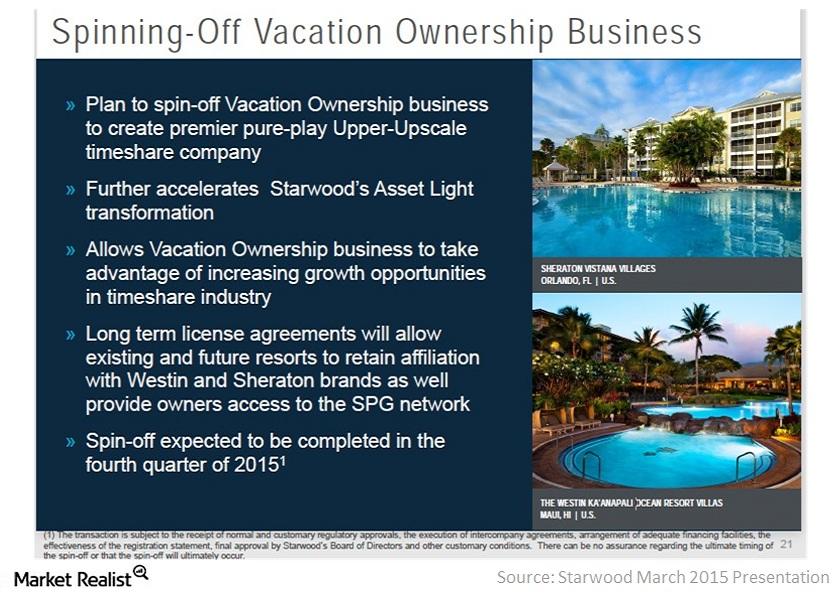
Starwood’s Vacation Ownership Business Spin-Off
On February 10, 2015, Starwood Hotels and Resorts announced plans to spin off its vacation ownership business into a separate publicly traded company.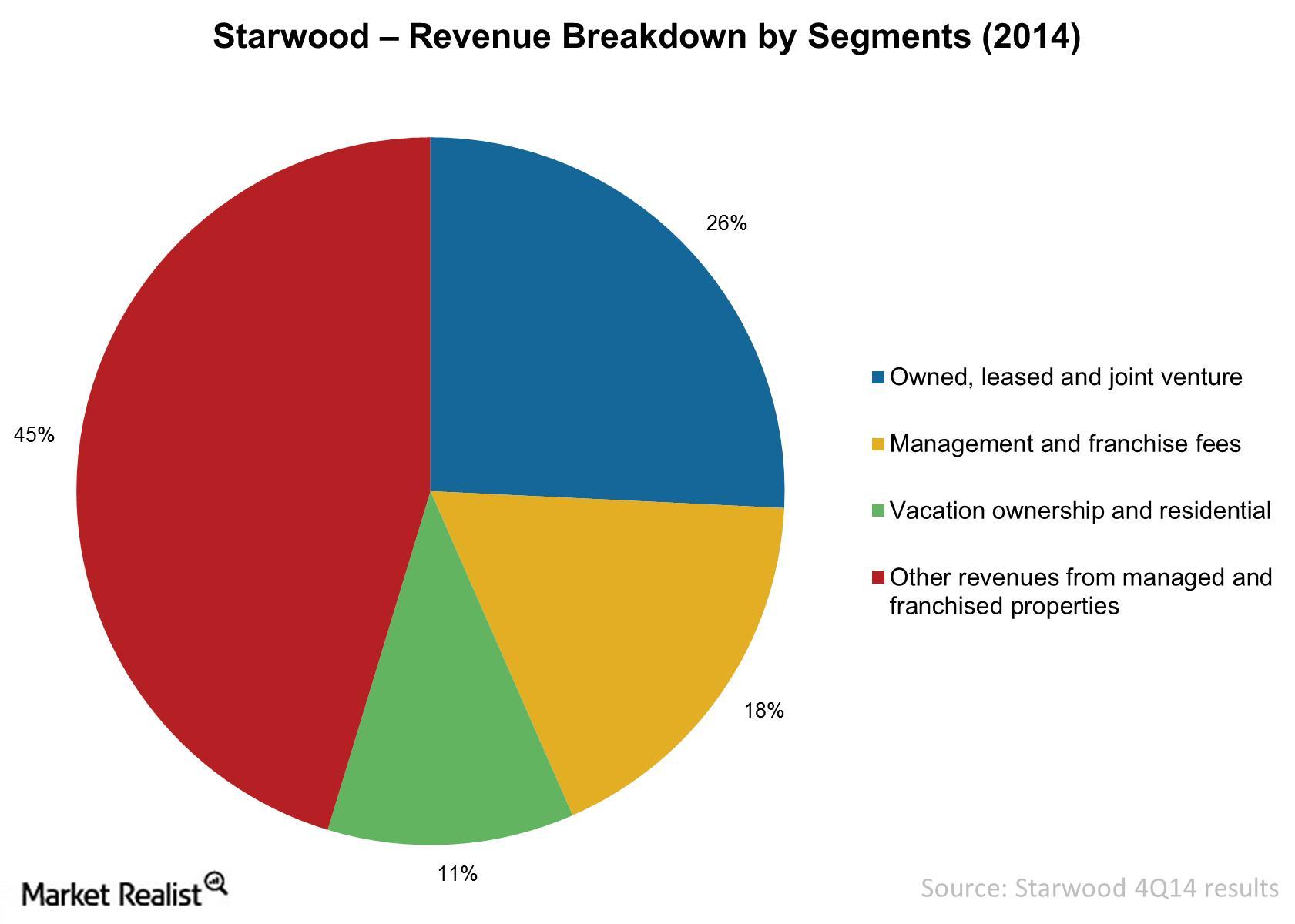
What Are Starwood’s Revenue Sources?
The revenue from owned, leased, and consolidated joint ventures is primarily derived from hotel operations. This includes room rentals and food and beverage sales.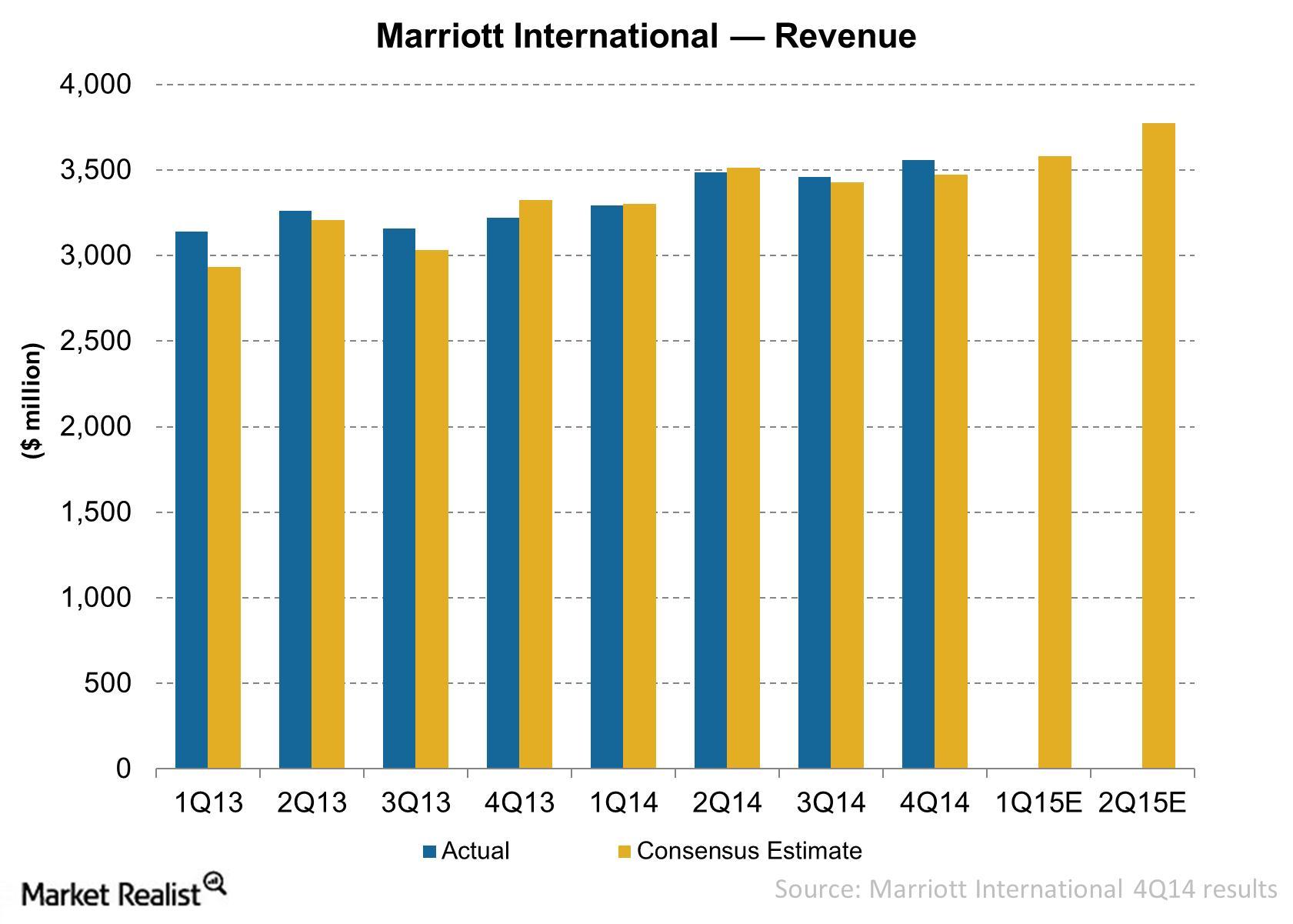
Why Marriott’s Revenue Increased in 2014
Marriott’s revenues totaled nearly $3.6 billion in the fourth quarter of 2014, compared to $3.2 billion in the fourth quarter of 2013.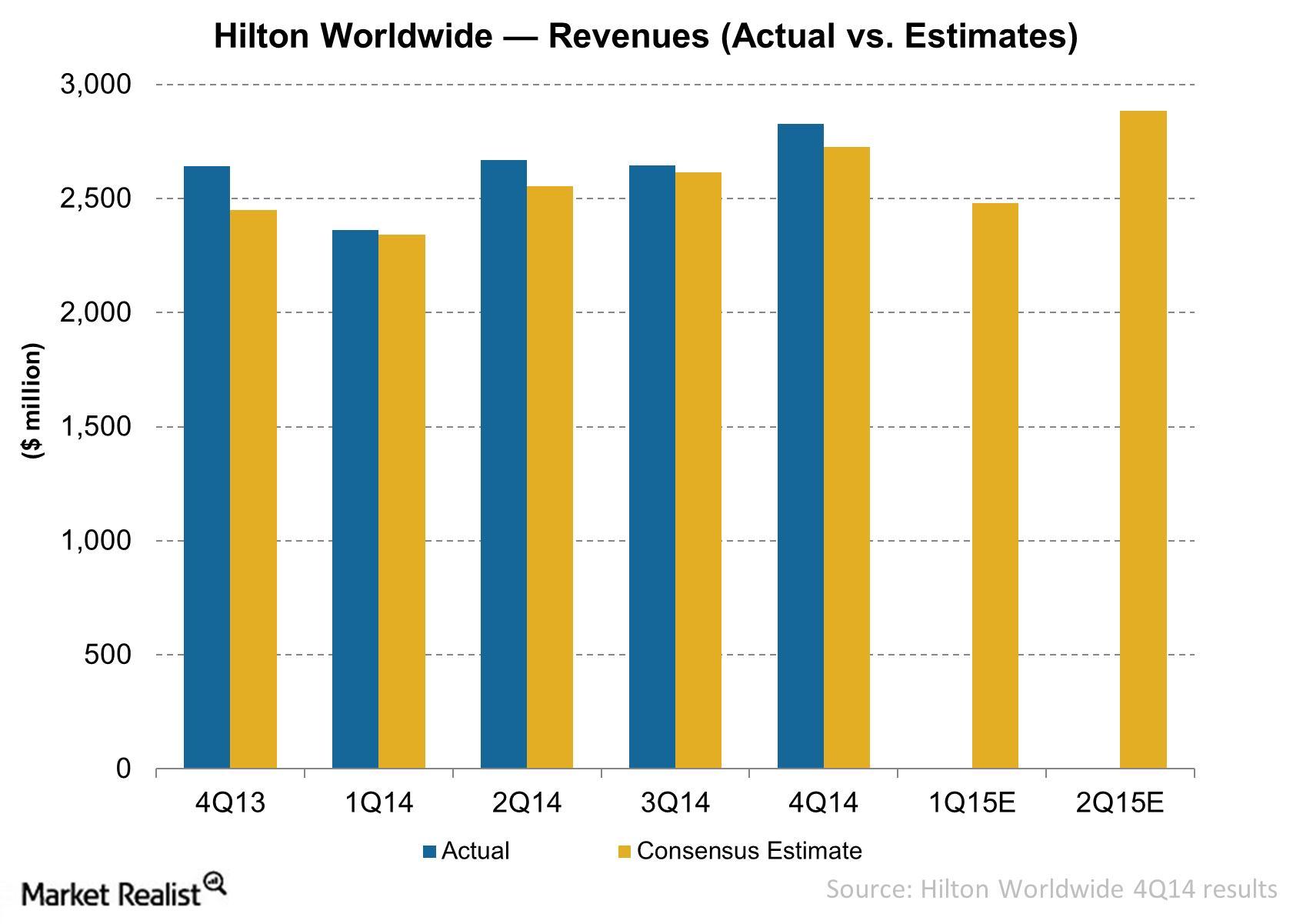
Why did Hilton’s revenue increase in 2014?
Hilton’s 4Q14 revenue increased 7% YoY to $2,828 million. For 2014, its revenue increased by 10.5 billion, or 7.9%—compared to 2013.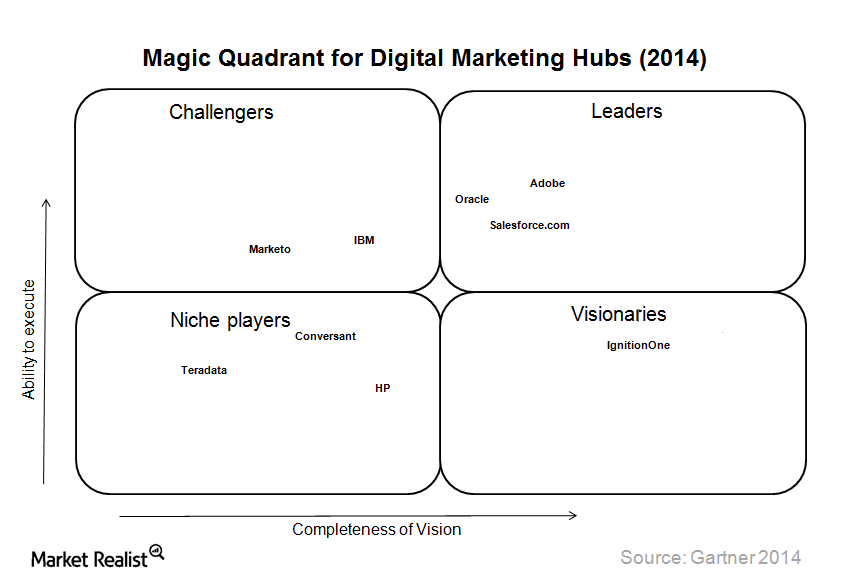
Why Adobe is leading in Gartner’s ‘Magic Quadrant’
In December 2014, Adobe announced that it had been recognized by Gartner as a leader in the 2014 “Magic Quadrant for Digital Marketing Hubs” research report.Consumer Why Marriott’s hotels have a specific ownership structure
Marriott (MAR) operated a total of 3,916 hotel properties in fiscal year 2013. Most of these properties were either managed, franchised, or licensed.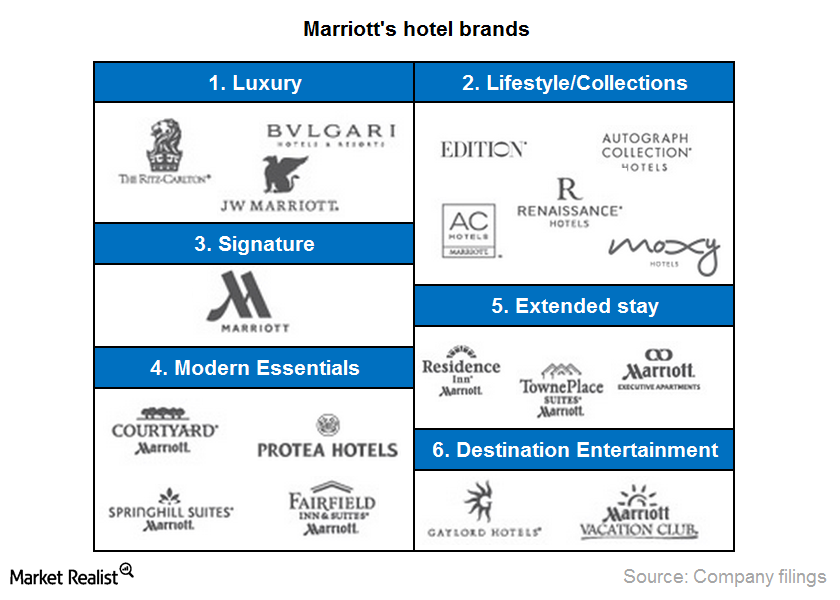
Why it’s important to understand Marriott’s brands
Marriott has a diverse portfolio of 18 brands. It describes the brands as “individually distinct and collectively powerful.”Consumer Must-know: Hilton gets revenue from its timeshare segment
Timesharing—also known as vacation ownership—is a method of getting the right to use a vacation property like a hotel or a resort. The buyer owns “timeshare interests” or intervals.Consumer A breakdown of Hilton’s revenue by segments
Timeshare revenue accounted for ~18% of total revenue from segments. The company generates revenue by marketing and selling timeshare interests and managing resort operations.Consumer Why Hilton expanded its presence in the international market
Hilton’s hotels, resorts, and timeshare properties are spread across 91 countries and territories. On December 31, 2013, Hilton’s portfolio consisted of 678,630 rooms.Consumer Hilton’s market share in the domestic and international market
Hilton’s growth plans are measured by the number of rooms under construction. Its growth plans rank first in the industry in all its markets—domestic and international.Consumer Why InterContinental Hotels’ “asset-light” strategy drives growth
The company said on its website that its “business model is focused on franchising and managing hotels, rather than owning them, enabling us to grow at an accelerated pace with limited capital investment—we call this ‘asset light.’
